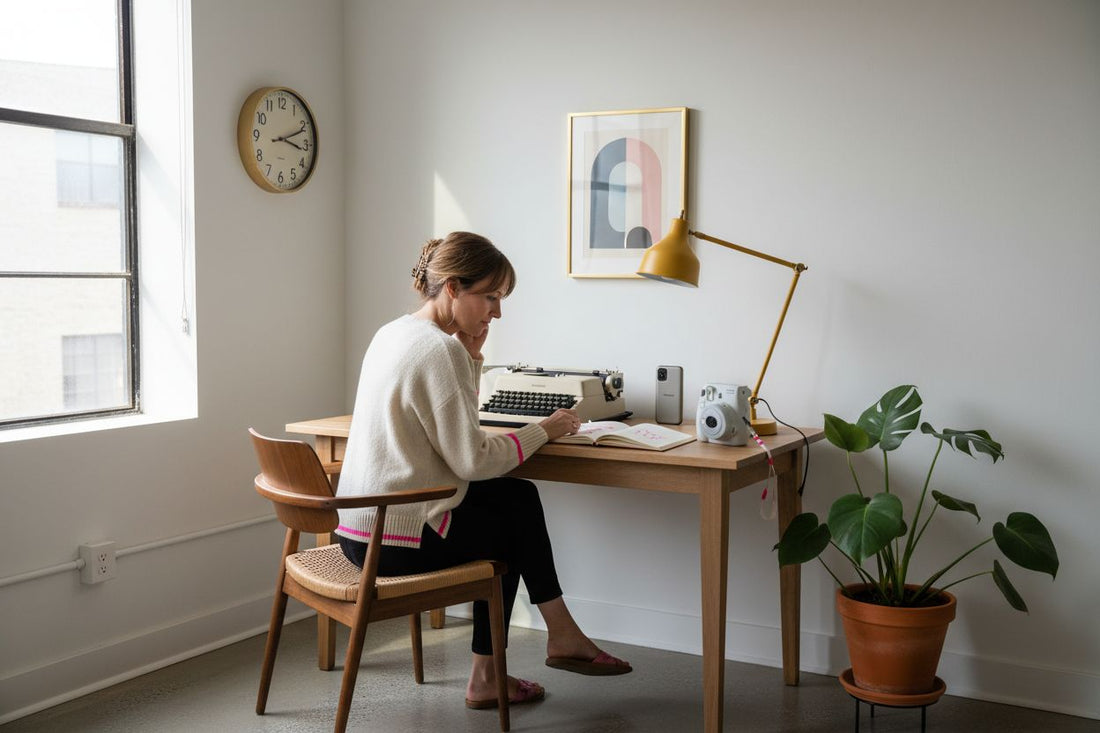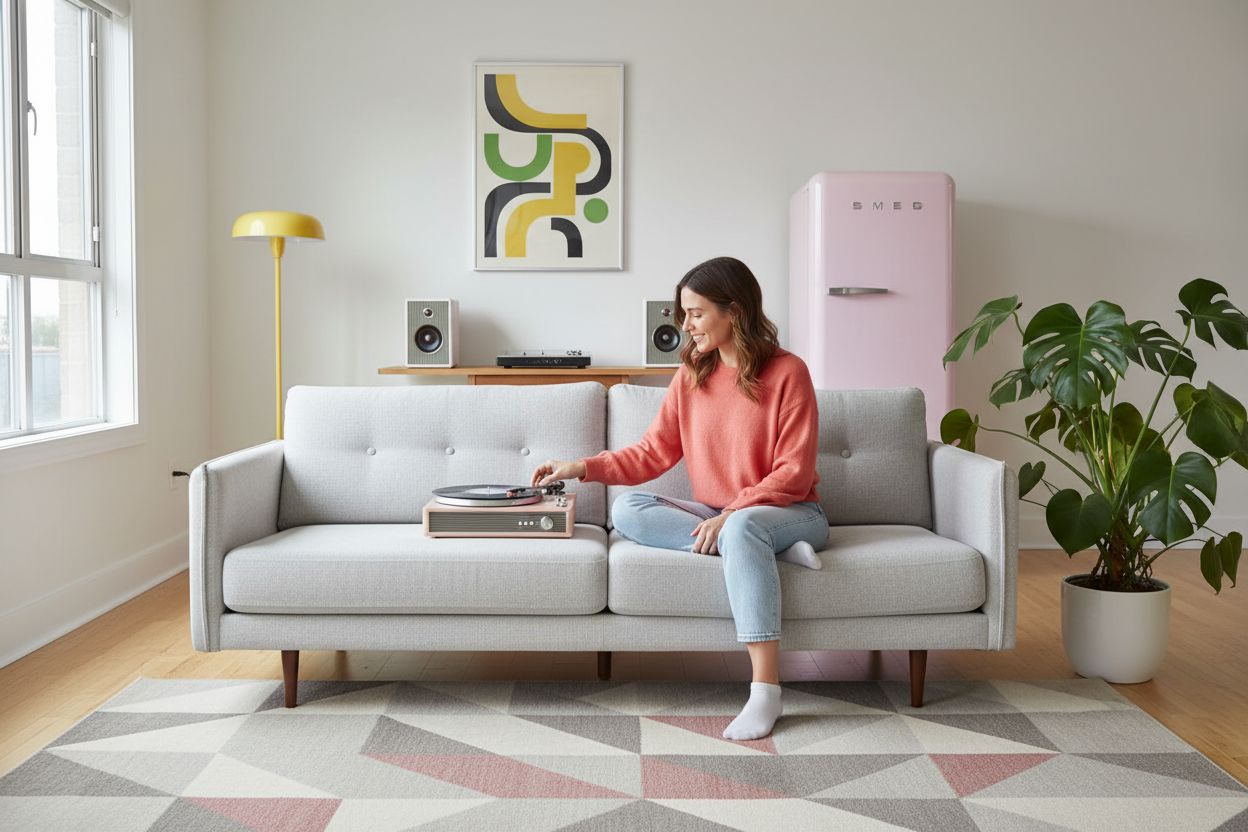
Minimalist Approach to Retro Style: Complete Guide
Share
Did you know that over 60 percent of designers say blending retro and minimalist styles leads to more inspiring spaces? This approach gives homes and products a look that feels both fresh and nostalgic, catching the eye while staying uncluttered. By combining clean lines with thoughtful vintage touches, minimalist retro style offers a simple yet emotionally rich aesthetic that stands out in today’s crowded design world.
Table of Contents
- Defining Minimalist Retro Style Principles
- Types of Retro Tech With Minimalist Appeal
- Key Features of Modern Minimalist Retro Products
- Benefits and Challenges of Minimalist Retro Aesthetics
- Common Mistakes When Blending Minimalism and Retro
Key Takeaways
| Point | Details |
|---|---|
| Minimalist Retro Principles | This style integrates clean simplicity with nostalgic elements, showcasing intentional design through clean lines and curated vintage touches. |
| Minimalist Retro Tech | Emphasizing simplicity, devices feature vintage aesthetics combined with modern functionality, such as limited-function mobile phones and digital typewriters. |
| Benefits of Aesthetics | Offers enhanced focus and emotional connection through carefully selected vintage elements, creating spaces that are cozy yet uncluttered. |
| Common Mistakes | Avoid overcrowding with vintage items and neglecting negative space, which can lead to a chaotic design that undermines minimalist intentions. |
Defining Minimalist Retro Style Principles
Minimalist retro style represents a sophisticated design philosophy that harmoniously blends two seemingly opposite aesthetic approaches: the clean simplicity of minimalism and the nostalgic warmth of vintage design. According to architectural sources tracing minimalist principles back to the Bauhaus movement, this style emphasizes simplicity, functionality, and intentional design.
At its core, minimalist retro style prioritizes three fundamental elements: clean lines, strategic negative space, and carefully curated nostalgic details.
Here’s a comparison of the core minimalist retro style principles:
| Principle | Minimalist Element | Retro Element |
|---|---|---|
| Colour Palette | Neutral, understated | Strategic vintage accents |
| Materials | Simple, high-quality | Evokes historical craftsmanship |
| Shapes & Silhouettes | Clean lines, uncluttered | Inspired by mid-century forms |
| Texture & Pattern | Subtle, purposeful | Throws back to past eras |
| Functionality | Essential, intentional | Nostalgic with a modern twist |
| Decorative Details | Minimal, curated | Emotive, evocative touches |
![]()
Key characteristics of minimalist retro style include:
- Neutral color palettes with strategic accent colors
- High-quality, crafted materials that evoke historical craftsmanship
- Typography and patterns that reference mid-century design
- Deliberate use of texture to add visual and sensory interest
- Furniture and accessories with streamlined, functional shapes

While exploring this aesthetic, you might find additional inspiration in our guide on understanding retro-inspired design, which delves deeper into the nuanced world of vintage-modern fusion.
Types of Retro Tech With Minimalist Appeal
Minimalist retro tech represents an exciting intersection of nostalgic design and contemporary functionality, offering devices that celebrate simplicity while paying homage to vintage aesthetics. According to design research, these technologies prioritize clean lines, purposeful features, and an intentional reduction of unnecessary complexity.
One compelling example of minimalist retro tech is the Light Phone III, a feature phone designed with a monochrome minimalist approach that strips away unnecessary digital distractions. As noted in encyclopedic sources, this device embodies the philosophy of intentional technology—providing essential communication tools without overwhelming users with constant notifications and endless apps.
Key types of minimalist retro tech include:
- Digital typewriters with vintage keyboard designs
- Compact gaming consoles reminiscent of classic systems
- Instant cameras blending modern technology with retro styling
- Limited-function mobile devices focused on essential communication
- Audio players with simplified, classic interfaces
For tech enthusiasts seeking to explore more about the fascinating world of retro-inspired gadgets, our guide on what makes a gadget truly retro provides deeper insights into the nuanced realm of vintage technological design.
Key Features of Modern Minimalist Retro Products
Modern minimalist retro products represent a sophisticated design philosophy that seamlessly blends nostalgic aesthetics with cutting-edge functionality. These innovative devices capture the essence of vintage design while incorporating contemporary technological advancements, creating a unique fusion of past and present.
According to design research, exemplary products like the Brionvega Radiofonografo demonstrate the core principles of this design approach. This iconic piece combines a mid-century turntable aesthetic with modern features such as FM/AM radio, auxiliary input, and Bluetooth connectivity. Similarly, appliances like the Smeg FAB28 refrigerator showcase how vintage curves and color palettes can be integrated with state-of-the-art cooling technology.
Key features of modern minimalist retro products include:
- Authentic vintage-inspired visual design
- Streamlined, clean aesthetic with purposeful details
- Advanced technological functionality
- High-quality, durable materials
- Intuitive user interfaces that blend classic and modern elements
- Versatile connectivity options (Bluetooth, Wi-Fi, aux)
- Compact and space-efficient designs
For enthusiasts eager to dive deeper into the world of retro-inspired design trends, our article on vintage style meets modern tech offers additional insights into this fascinating design movement.
Benefits and Challenges of Minimalist Retro Aesthetics
Minimalist retro aesthetics represent a nuanced design approach that balances nostalgic charm with contemporary simplicity. This style offers a unique visual language that celebrates both historical design elements and modern design principles, creating spaces and products that feel simultaneously familiar and forward-thinking.
According to interior design research, the primary benefits of this aesthetic include enhanced focus, sustainability, and a sense of calm. The intentional curation of vintage-inspired elements combined with minimalist principles creates living spaces that feel both cozy and uncluttered. As decor trend experts note, this approach allows for a balanced warmth that doesn’t compromise the clean lines and purposeful design characteristic of minimalism.
Key benefits and challenges include:
- Enhanced visual clarity and reduced mental clutter
- Sustainable approach to design and consumption
- Emotional connection through carefully selected nostalgic pieces
- Risk of creating overly sterile or impersonal spaces
- Delicate balance between vintage elements and minimalist restraint
- Potential difficulty in maintaining design cohesion
For those intrigued by the cultural significance of this design trend, our article on why retro style is trending offers deeper insights into the broader appeal of vintage-inspired aesthetics.
Common Mistakes When Blending Minimalism and Retro
Blending minimalism and retro design requires a delicate balance that many design enthusiasts struggle to achieve. The inherent tension between clean, purposeful minimalism and the nostalgic, often ornate nature of retro aesthetics can lead to visual confusion and design missteps that undermine the intended aesthetic.
According to interior design research, the most critical mistake is overwhelming the minimalist foundation with too many retro elements. This occurs when designers lose sight of the fundamental principle of intentional curation. As design experts warn, an excess of vintage accessories or bold retro colors can quickly transform a carefully crafted minimalist space into a cluttered, visually chaotic environment.
Common mistakes to avoid include:
- Overcrowding spaces with too many vintage pieces
- Selecting retro items without considering overall design harmony
- Ignoring the importance of negative space in minimalist design
- Using bold retro colors that clash with minimalist color palettes
- Failing to maintain a consistent design language
- Prioritizing nostalgia over functional design principles
To deepen your understanding of navigating these design challenges, our guide on mastering retro-inspired decor offers practical insights into creating a balanced, cohesive aesthetic.
Embrace the Perfect Balance of Minimalist Retro with OnlyRetro
Struggling to blend the clean simplicity of minimalism with the warm nostalgia of retro style? This challenge of balancing purposeful design and evocative vintage elements is exactly why many find minimalist retro aesthetics so rewarding yet tricky. Your goal is to create spaces and tech setups that feel both modern and timeless without overcrowding or visual clutter. With a focus on intentional curation, authentic vintage-inspired designs, and functional technology, OnlyRetro offers a carefully selected collection that helps you achieve that ideal fusion.
Explore our range of retro-themed tech gadgets, audio devices, and stylish accessories that deliver streamlined functionality with nostalgic charm. Whether you want to enhance your home with vintage-inspired pieces or find minimalist retro tech that matches your thoughtful lifestyle, start your journey at OnlyRetro. For deeper inspiration, you might find our guides on understanding retro-inspired design and mastering retro-inspired decor helpful.
Ready to experience minimalist retro without compromise? Discover products that capture authentic style while keeping your space and tech clutter-free. Visit OnlyRetro now and bring timeless elegance and modern ease into your everyday life.
Frequently Asked Questions
What are the key principles of minimalist retro style?
Minimalist retro style combines simplicity and functionality with nostalgic design elements. Key principles include clean lines, strategic negative space, a neutral color palette with vintage accents, high-quality materials, and purposeful decorative details.
How can I incorporate minimalist retro tech into my lifestyle?
Incorporate minimalist retro tech by choosing products that offer essential features without unnecessary complexity. Examples include digital typewriters, compact gaming consoles, instant cameras, and feature phones that prioritize timeless design over modern distractions.
What are the benefits of adopting a minimalist retro aesthetic?
The benefits include enhanced focus and sustainability, a sense of calm in living spaces, emotional connection through curated vintage pieces, and visual clarity. This aesthetic allows for cozy yet uncluttered environments that marry historical charm with modern simplicity.
What common mistakes should I avoid when blending minimalism with retro design?
Common mistakes include overcrowding spaces with vintage items, ignoring negative space, and using bold retro colors that clash with minimalist palettes. Maintaining design cohesion and prioritizing functional design principles is crucial to achieving a harmonious look.